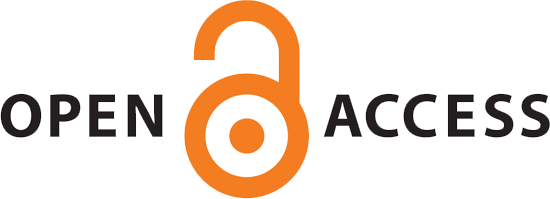The Effect of Using Virtual Reality on Pain and Comfort in Breast Cancer Patients Undergoing Chemotherapy
Abstract
Background: Breast cancer can lead to pain and reduced comfort in individuals and affect their lives. Therefore, planning to maintain or improve the level of comfort and pain management in these patients with training focused on virtual reality seems necessary. Therefore, the present study aimed to investigate the effect of using virtual reality on pain and comfort in breast cancer patients undergoing chemotherapy in Zahedan.
Methods: This randomized clinical trial was conducted on 90 patients undergoing chemotherapy at Khatam Al-Anbiya Hospital in Zahedan. Participants were randomly assigned to two intervention groups (n=45) and control groups (n=45). The intervention group used Samsung Gear VR in the first 15 minutes of chemotherapy, while the control group did not receive any intervention. Data collection included the McGill Pain Questionnaire (MPQ) and the Hospital Comfort Questionnaire (HCQ), which were administered before and after chemotherapy. Data were analyzed using SPSS 21 software with paired and independent t-tests.
Results: The mean pain score in the intervention group decreased significantly after using VR (pre: 42.00 ± 12.99, post: 30.77 ± 11.6, p=0.0001), while no significant change was observed in the control group (p>0.05). Similarly, the comfort level in the VR group improved significantly compared to the control group (p<0.05).
Conclusion: The use of virtual reality significantly reduced pain and increased comfort in chemotherapy patients. Implementing VR as a non-pharmacological method in pain management protocols can improve the quality of life and treatment experience of cancer patients.
[2] Allahqoli L, Mazidimoradi A, Momenimovahed Z, Rahmani A, Hakimi S, Tiznobaik A, et al. The Global Incidence, Mortality, and Burden of Breast Cancer in 2019: Correlation With Smoking,Drinking, and Drug Use. Front Oncol. 2022;12.
[3] Mahdavifar N, Pakzad R, Ghoncheh M, Pakzad I, Moudi A, Salehiniya H. Spatial Analysis of Breast Cancer Incidence in Iran. Asian Pac J Cancer Pre. 2016;17:59-64.
[4] Bener A, Alsulaiman R, Doodson L, Agathangelou T. Depression, Hopelessness and Social Support among Breast Cancer Patients: in Highly Endogamous Population. Asian Pac J Cancer Prev. 2017 18(7):1889–96.
[5] Hashemi SM, Rafiemanesh H, Aghamohammadi T, Badakhsh M, Amirshahi M, Sari M, et al. Prevalence of anxiety among breast cancer patients: a systematic review and meta‑analysis. Breast Cancer 2020; 27(2):166-178.
[6] Maindet C, Burnod A, Minello C, George B, Allano G, Lemaire A. Strategies of complementary and integrative therapies in cancer-related pain—attaining exhaustive cancer pain management. Support Care Cancer. 2019;27(8):3119-32.
[7] Sinha U, Kumar D. Mindfulness-based cognitive behaviour therapy with emotionally disturbed adolescents affected by HIV/AIDS. J Indian Assoc. Child Adolesc Ment Health. 2010;6(1):19-30.
[8] Syd R. Cognitive behavioral therapy for highly stressed breast cancer survivors. J Pain Manag. 2012;5(1):33.
[9] Mikaeili N, Fathi A, Kanani S, Samadifard H. A Comparison of distraction techniques (bubble and cartoon) on reducing chemotherapy induced pain in children with cancer. Iran J Child Advoc. 2020;1(1):15-23.
[10] Li A, Montaño Z, Chen V, Gold J. Virtual reality and pain management: current trends and future directions. Pain Manag. 2011;1(2):147-57.
[11] Heirani A, Aghdasi M, Jahangiri M. Effect of virtual motor rehabilitation on balance and mobility among patients with acquired brain injury. MEJDS 2017;7(13):1-8.
[12] Aliakbari M, Alipor A, Ebrahimimoghadam H, Fekraty M. The effect of virtual reality (VR) on psychological disorders in cancer caseses. Mil Caring Sci. 2017;4(1):49-57.
[13] Miyazaki I, Asanuma M. Dopaminergic neuron-specific oxidative stress caused by dopamine itself. Acta Med Okayama. 2008;62(3):141-50.
[14] Shafipour V. Mohammadi E, Ahmadi F. The Perception of Cardiac Surgery Patients on Comfortable Resources: A Qualitative Study. J Qual Res Health Sci. 2012; 1(2): 123-134.
[15] Gold J, Mahrer N. Is virtual reality ready for prime time in the medical space? A randomized control trial of pediatric virtual reality for acute procedural pain management. J pediatr psychol. 2017;43(3):266-75.
[16] Villani D, Riva F, Riva G. New technologies for relaxation: The role of presence. Int J Stress Manag. 2007;14(3):260-74.
[17] Schneider SM, Kisby CK, Flint EP. Effect of virtual reality on time perception in patients receiving chemotherapy. Support Care Cancer. 2011;19(4):555-64.
[18] Rasekaba T, Lim K, Blackberry I, Gray K, Furler J. Telemedicine for gestational diabetes mellitus (telegdm): a mixed-method study protocol of effects of a web-based GDM support system on health service utilization, maternal and fetal outcomes, costs, and user experience. JMIR Res Protoc. 2016;5(3):e163.
[19] SHahmoradi L, Almasi S, Mehrabanfar M. Applications of virtual environment in the field of health. J Mod Med Inf Sci. 2017;10(3(1)):56-66.
| Files | ||
| Issue | Article in Press |
|
| Section | Research Article(s) | |
| Keywords | ||
| Virtual reality pain management chemotherapy patient comfort breast cancer oncology | ||
| Rights and permissions | |

|
This work is licensed under a Creative Commons Attribution-NonCommercial 4.0 International License. |




